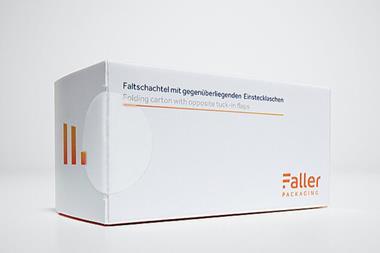
A turnkey validated vision system from Olmec-UK is a core component of the ‘SerialTrac’ serialization solution developed by Domino Printing Sciences.
SerialTrac has been introduced to provide the item-level serialisation capability needed in the pharmaceutical industry to meet the EU Falsified Medicines Directive (FMD) and others, and has won the prestigious award for the ‘Most Innovative Processing or Packaging Machine’ at the PPMA (Processing and Packaging Machinery Association) Group Awards announced at the end of September.
Serialtrac is a validated out of the box solution that follows the systematic aggregation (carton to bundle, bundle to case, case to pallet) approach used on primary packaging lines by many smaller to medium sized manufacturers.
The simple but high quality vision system consists of 3 Basler GigE Vision area scan cameras and a Microscan ID40 fixed mount barcode reader. Code reading, verification and grading is carried out using Microscan Frontrunner software running on a Beckhoff industrial PC that's also running a soft PLC program with SQL database and RIO. Illumination is provided using angled LED bar lights in accordance with the ISO specification. The inspection system can handle up to 600 parts/minute and deliver all the relevant ISO data to facilitate compliance decisions.
Key to the performance of the system is its ability to manage the real time data handling and manipulation given the sheer volume of data that needs to be checked. The vision system handles the complex data generation and management needed to link production management databases, set up the inspection process, create codes and inspect them, handle aggregation requirements and return data to the factory level data repository.
Once the production order starts, unique and non-predictive encrypted serial numbers are securely generated using the well-established Codentify platform and sent to both the printer and the vision system controller. The vision system reads and verifies the 2D and human readable codes, checks the authenticity of the serialisation code and that it is not duplicated with any previously generated code and grades the 2D code.
After serialisation the cartons are usually aggregated into bundles, cases etc. The vision system can create relationships between the aggregated products and the next level, either by scanning the cartons individually or taking an image of the aggregated group and reading the individual codes. A label for the aggregation is then printed, containing a 2D datamatrix code, the GTIN, a new serial number and the relationship. This process can be done manually or the system can be linked into an automatic bundler.
Provision is also made to decommission either a serialisation code (if a carton(s) gets damaged during aggregation) or an aggregated code (if a box has become damaged but the individual cartons are OK).
More info:









